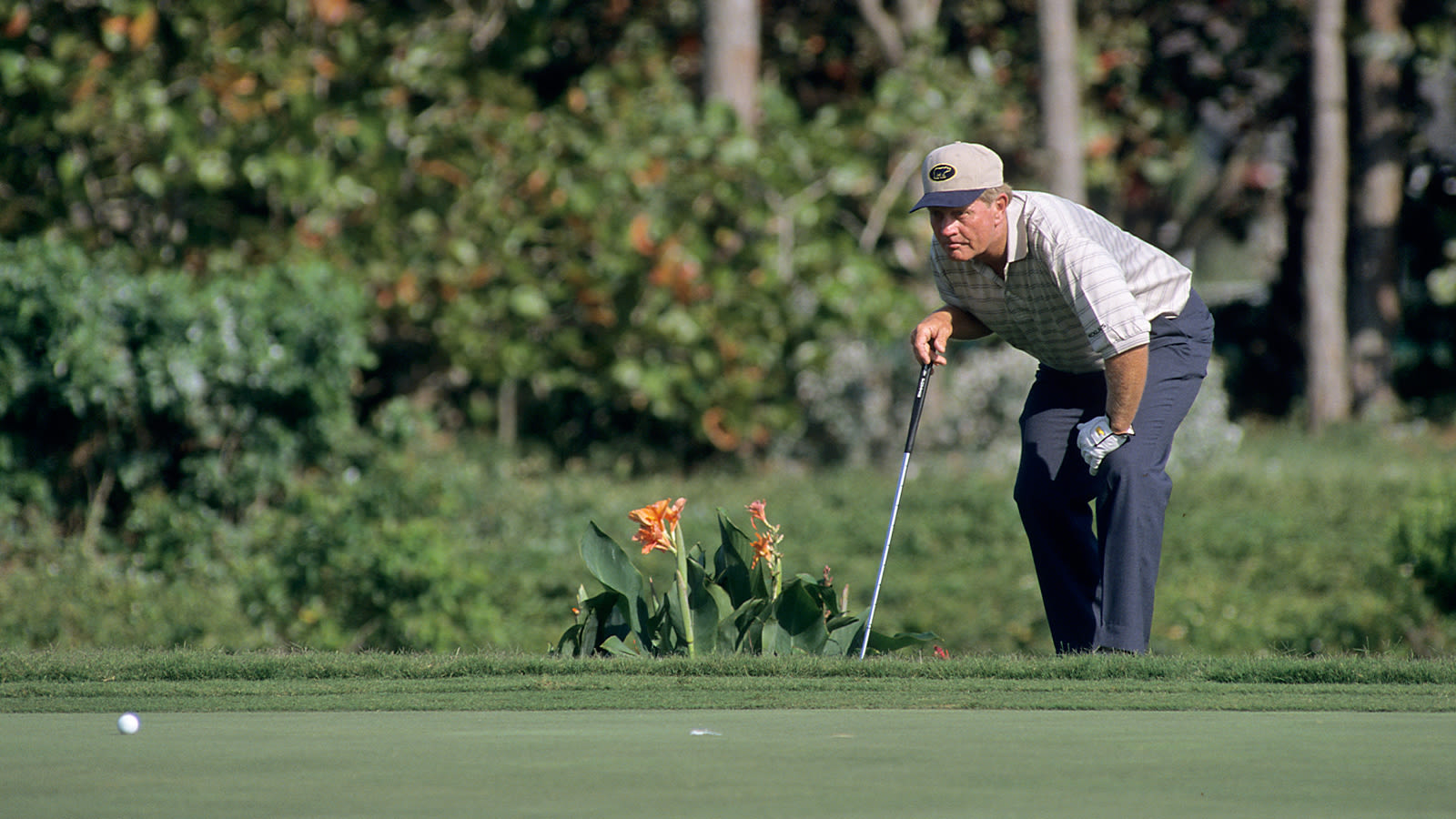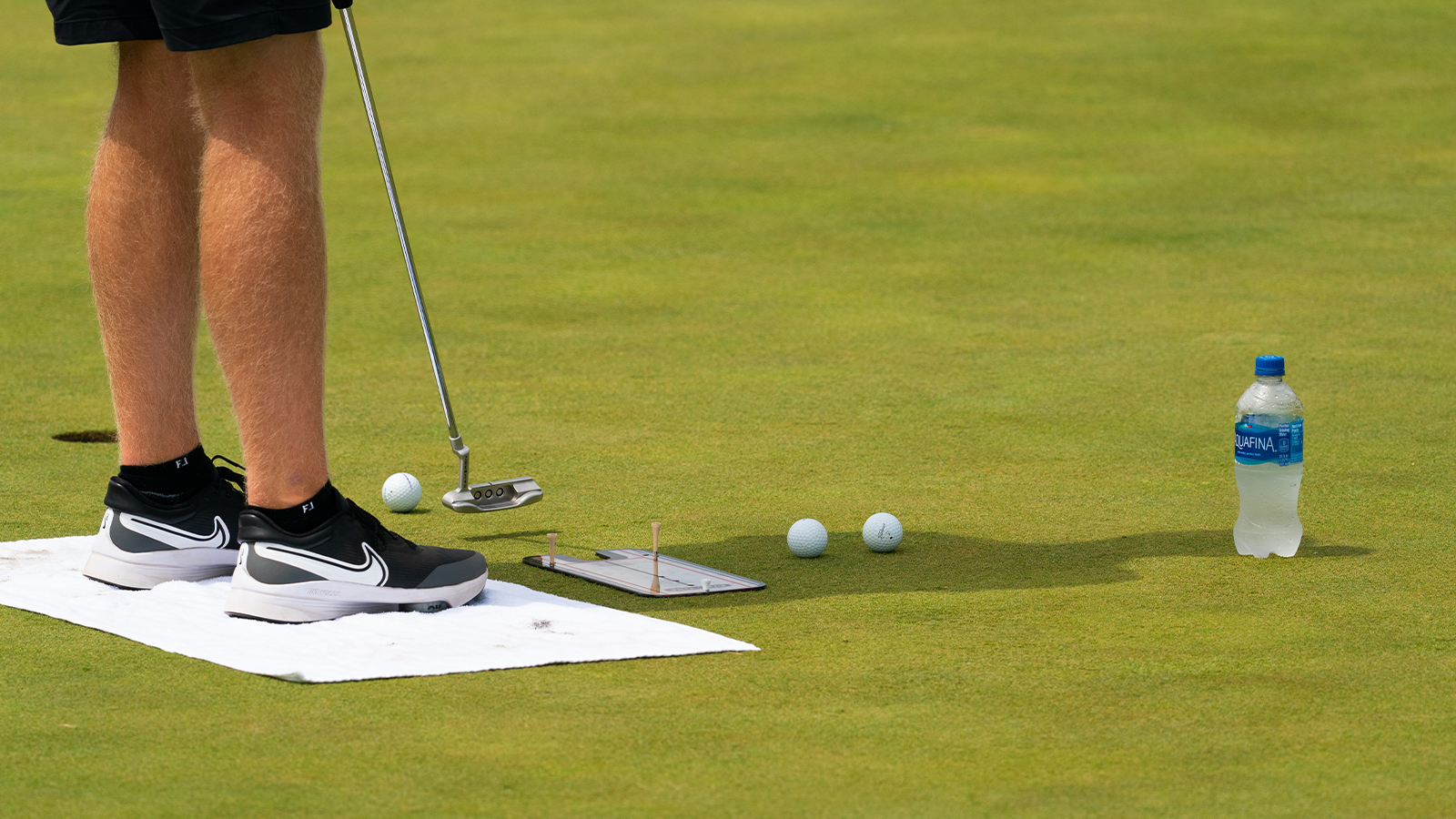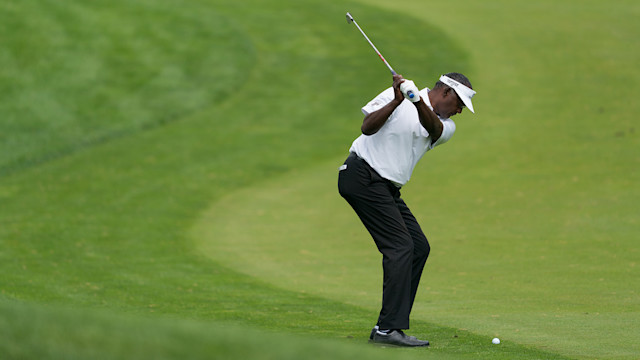quick coaching
Lag Putting: Sink More Long Putts Like The Golden Bear
By Vinnie Manginelli, PGA
Published on

Jack Nicklaus reading his putt during the 59th Senior PGA Championship held at the PGA National Golf Club in Palm Beach Gardens, Florida. April 16-19, 1998. (photograph by The PGA of America).
What can you say about this unbelievable putt that Jack Nicklaus himself hasn’t already expressed? In designing the course at Harbor Shores, he felt that lag putting from that particular spot on the 10th hole was a better option than chipping it - less wear and tear on the course and easier for amateurs to get the ball close to the hole. Johnny Miller thought it was impossible... and Jack showed him just what can happen with a good lag putt.
Lag putting, after all, is often the difference between a good round of golf and one that has you pulling your hair out. Sure, we’d like to make every putt we attempt, but the priority when it comes to lag putting is getting it close, ensuring your two-putt, and salvaging a decent score at the end of the day — and hey, maybe a few will go in like Jack's.
When was the last time you went to the range or course and spent a half hour just putting from 15-, 20-, even 30-feet away from the hole? You really should make it part of your practice regimen.
Try this:
- Actually measure your distance from ball to hole, rather than just dropping three balls on the green and putting away. If it’s a course (and greens) that you play consistently, you’ll be able to gauge the length of your stroke based on the distance of the putt.
- Develop a routine:
- Step behind the ball
- Determine the break and undulations
- Pick a spot between you and the hole and putt to the spot with the appropriate force to get the ball to the hole
- Take two or three practice strokes that mirror your intended stroke.
- Practice allows you to correct your faults - First putt too far? Make your adjustment and try again. Learn how big a stroke you need for each distance.

A contestant makes his putt on the practice greens during the third round for the 46th Boys and Girls Junior PGA Championship held at Cog Hill Golf & Country Club on August 4, 2022 in Lemont, Illinois. (Photo by Hailey Garrett/PGA of America)
A golf hole is 4.25 inches in width. It is inherently easier to putt to a six-foot circle around the hole than the four inches that is the hole. That six-foot diametrical circle is represented by three foot radii on all sides of the cup. It is a generally-accepted notion that lag putts ending up within three feet of the hole will be comfortably holed on the next putt. Sure, there are exceptions and an occasional missed two-footer, but if you can get those lag putts, especially those that are longer than 20 feet to within three feet, you’ve done your job.
Of course, in the video, Jack took a look and wasted no time over the putt that he made. And he’d be the first to tell you that it was a fluke. But it makes you wonder why such flukes happen to the best of the best more than the rest of us. Does “better than most” ring a bell?
Whether it’s Jack or Tiger or Jon Rahm holing it from 60 feet on the 18th at Torrey for his first-ever win, practice makes a difference. Practicing with a purpose is vital. Take a bucket of balls and put tees in the green at specific distances - putt to those tees. Take note of the length of your stroke. Just like hitting driver and driver on the range with little to no thought process in between does nothing to help your game, dropping three balls and aimlessly putting away renders similarly-dismal results. Elevate your practice game and you’ll see more flukes go your way on the golf course.


